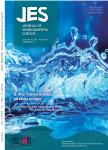Ammonia pollution characteristics of centralized drinking water sources in China
Ammonia pollution characteristics of centralized drinking water sources in China作者机构:College of Water SciencesBeijing Normal UniversityBeijing 100875China State Key Laboratory of Environmental Criteria and Risk AssessmentState Environmental Protection Key Laboratory of Source Water ProtectionChinese Research Academy of Environmental SciencesBeijing 100012China
出 版 物:《Journal of Environmental Sciences》 (环境科学学报(英文版))
年 卷 期:2012年第24卷第10期
页 面:1739-1743页
核心收录:
学科分类:07[理学] 08[工学] 070602[理学-大气物理学与大气环境] 0815[工学-水利工程] 0706[理学-大气科学]
基 金:supported by the Water Pollution Control and Management (No. 2009ZX07419-002-2,2009ZX07419-003) the International Science and Technology Cooperation Program of China (No.2007DFA90510)
主 题:ammonia centralized drinking water sources distribution China
摘 要:The characteristics of ammonia in drinking water sources in China were evaluated during 2005-2009. The spatial distribution and seasonal changes of ammonia in different types of drinking water sources of 22 provinces, 5 autonomous regions and 4 municipalities were investigated. The levels of ammonia in drinking water sources follow the order of fiver 〉 lake/reservoir 〉 groundwater. The levels of ammonia concentration in river sources gradually decreased from 2005 to 2008, while no obvious change was observed in the lakes/reservoirs and groundwater drinking water sources. The proportion of the type of drinking water sources is different in different regions. In river drinking water sources, the ammonia level was varied in different regions and changed seasonally. The highest value and wide range of annual ammonia was found in South East region, while the lowest value was found in Southwest region. In lake/reservoir drinking water sources, the ammonia levels were not varied obviously in different regions. In underground drinking water sources, the ammonia levels were varied obviously in different regions due to the geological permeability and the natural features of regions. In the drinking water sources with higher ammonia levels, there are enterprises and wastewater drainages in the protected areas of the drinking water sources.



